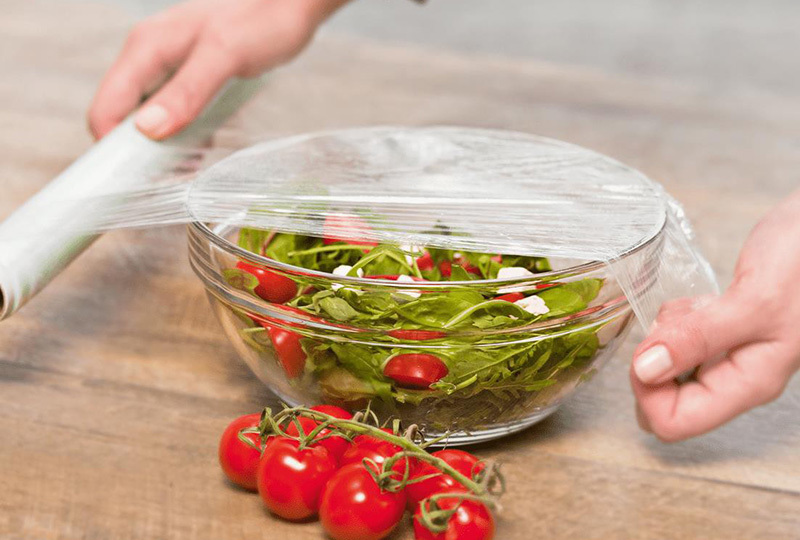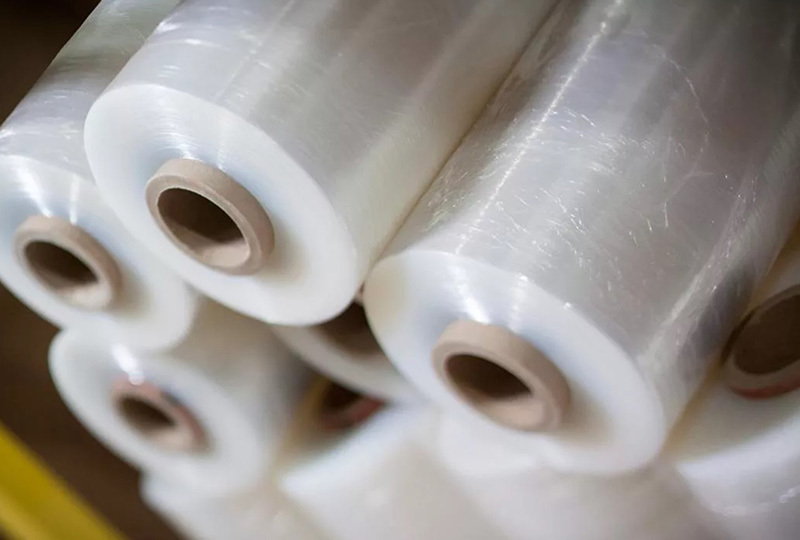Why Quality Matters When Choosing a Plastic Cling Film Supplier
Release time:
Jul 28,2025
Why Quality Matters When Choosing a Plastic Cling Film Supplier When it comes to food preservation in the kitchen, **plastic cling film** is a staple item that many of us rely on. However, not all cling films are created equal. The **quality of cling film** you choose can significantly affect the freshness of your food, its safety, and even your overall cooking experience. This article dives dee
Why Quality Matters When Choosing a Plastic Cling Film Supplier
When it comes to food preservation in the kitchen, **plastic cling film** is a staple item that many of us rely on. However, not all cling films are created equal. The **quality of cling film** you choose can significantly affect the freshness of your food, its safety, and even your overall cooking experience. This article dives deep into the importance of quality when selecting a **plastic cling film supplier**, helping you make informed decisions to enhance your kitchen operations.
Table of Contents
1. What is Plastic Cling Film?
2. Types of Plastic Cling Film
3. Benefits of High-Quality Cling Film
4. Factors to Consider When Choosing a Supplier
1. Material Quality
2. Production Standards
3. Supplier Reliability
5. Environmental Considerations
6. Cost vs. Quality: Finding the Balance
7. Top Suppliers in the Market
8. Conclusion
9. FAQs
What is Plastic Cling Film?
Plastic cling film, also known as plastic wrap or food wrap, is a thin plastic film used to seal food items in containers, helping to keep them fresh. This multifunctional kitchen item is made from various types of plastic, primarily **polyvinyl chloride (PVC)** or **polyethylene (PE)**, and comes in rolls of various sizes. When applied, the film clings tightly to surfaces, creating an airtight seal that prevents moisture loss and contamination.
Types of Plastic Cling Film
Understanding the different types of plastic cling film available can help you choose the best option for your needs. Here are the most common types:
1. PVC Cling Film
PVC cling film is a popular choice due to its affordability and effective cling properties. It is commonly used in households and food service environments. However, it is essential to check whether PVC cling film is safe for microwave use, as it can release harmful chemicals when heated.
2. PE Cling Film
Polyethylene cling film is a safer alternative to PVC. It is often categorized as food-safe and is suitable for wrapping food that will be heated in the microwave. PE cling film is less effective in terms of cling compared to PVC but is more environmentally friendly.
3. Biodegradable Cling Film
With growing environmental concerns, biodegradable cling films have emerged as a sustainable option. Made from natural materials, these films break down more quickly in landfills, making them an eco-friendly choice for conscious consumers.
Benefits of High-Quality Cling Film
Investing in high-quality cling film offers numerous benefits that can positively impact your kitchen experience:
1. Superior Freshness
High-quality cling films provide a better seal, which helps retain moisture and prevent air exposure. This results in fresher food, reducing waste and extending shelf life.
2. Safety and Health Standards
Quality cling films are manufactured under strict regulations, ensuring they are free from harmful chemicals and safe for food contact. This is particularly crucial for families with children and those concerned about food safety.
3. Versatility in Usage
Premium cling films can be used not only for food storage but also for various kitchen applications, including covering dishes, marinating items, and wrapping leftovers. Their durability and stretchability make them reliable for multiple tasks.
Factors to Consider When Choosing a Supplier
Selecting the right supplier for plastic cling film involves evaluating several factors that contribute to the overall quality and reliability of the product.
Material Quality
The primary material used in cling film affects its performance. Ensure the supplier uses high-grade materials that meet industry standards for safety and effectiveness. Look for certifications that verify the safety of the cling film for food contact.
Production Standards
It's essential to partner with a supplier that adheres to strict production standards. Inquire about the manufacturing processes, quality control measures, and any third-party testing the films undergo to maintain high-quality output.
Supplier Reliability
A reliable supplier ensures consistent product availability and timely deliveries. Research the supplier's reputation in the industry by reading customer reviews and testimonials. A dependable supplier can significantly impact your kitchen operations.
Environmental Considerations
In today’s world, sustainability is a growing concern among consumers. Here are some aspects to consider regarding the environmental impact of cling film:
1. Eco-Friendly Materials
Opt for suppliers that offer biodegradable or recyclable cling films. These options help reduce plastic waste and promote a healthier planet.
2. Responsible Manufacturing Practices
Investigate whether the supplier employs eco-friendly manufacturing practices, such as using renewable energy sources or minimizing emissions during production.
Cost vs. Quality: Finding the Balance
While it may be tempting to choose the cheapest option available, it is essential to weigh the cost against the quality. Low-cost cling films often compromise on safety and performance, leading to potential issues down the line. Consider the following when evaluating cost and quality:
1. Long-Term Savings
Investing in high-quality cling film can save you money in the long run by reducing food waste and ensuring better preservation.
2. Assessing Value
Evaluate the overall value of a product, including its effectiveness and the supplier's reputation, rather than focusing solely on the price tag.
Top Suppliers in the Market
When searching for a reliable plastic cling film supplier, consider the following top players in the market known for their commitment to quality:
1. Brand X
Brand X offers a wide range of high-quality cling films made from premium materials, ensuring safety and effectiveness in food preservation.
2. Brand Y
With a strong focus on eco-friendly products, Brand Y provides biodegradable cling films without sacrificing quality.
3. Brand Z
Known for its innovative manufacturing processes, Brand Z ensures its cling films are safe, durable, and suitable for various applications.
Conclusion
Choosing a quality plastic cling film supplier is crucial for ensuring the freshness and safety of your food. By understanding the different types of cling film, the benefits of high-quality options, and the factors to consider when selecting a supplier, you can make informed decisions that enhance your kitchen experience. Always prioritize quality, safety, and environmental considerations when making your choice, as these factors will ultimately impact your cooking and food preservation efforts.
FAQs
1. What is the difference between PVC and PE cling film?
PVC cling film is often more effective at clinging but may contain harmful chemicals, whereas PE cling film is safer for food contact and suitable for microwave use.
2. Can cling film be used in the microwave?
It depends on the type of cling film. Always check the packaging for microwave-safe labels before using it.
3. How do I choose the best cling film for food preservation?
Consider the material quality, production standards, and whether the film is suitable for the intended use, such as microwave or freezer storage.
4. Are biodegradable cling films effective?
Yes, biodegradable cling films can be effective in preserving food while being more environmentally friendly.
5. How can I ensure the cling film I purchase is safe for food use?
Look for certifications and safety labels on the product packaging that indicate compliance with food safety standards.
Related News
What are the characteristics of PVC fresh-keeping film for food preservation
Can PVC plastic wrap be heated in a microwave oven?
What is the difference between PVC cling film and PE cling film
The choice of PVC cling film need to pay attention to what






